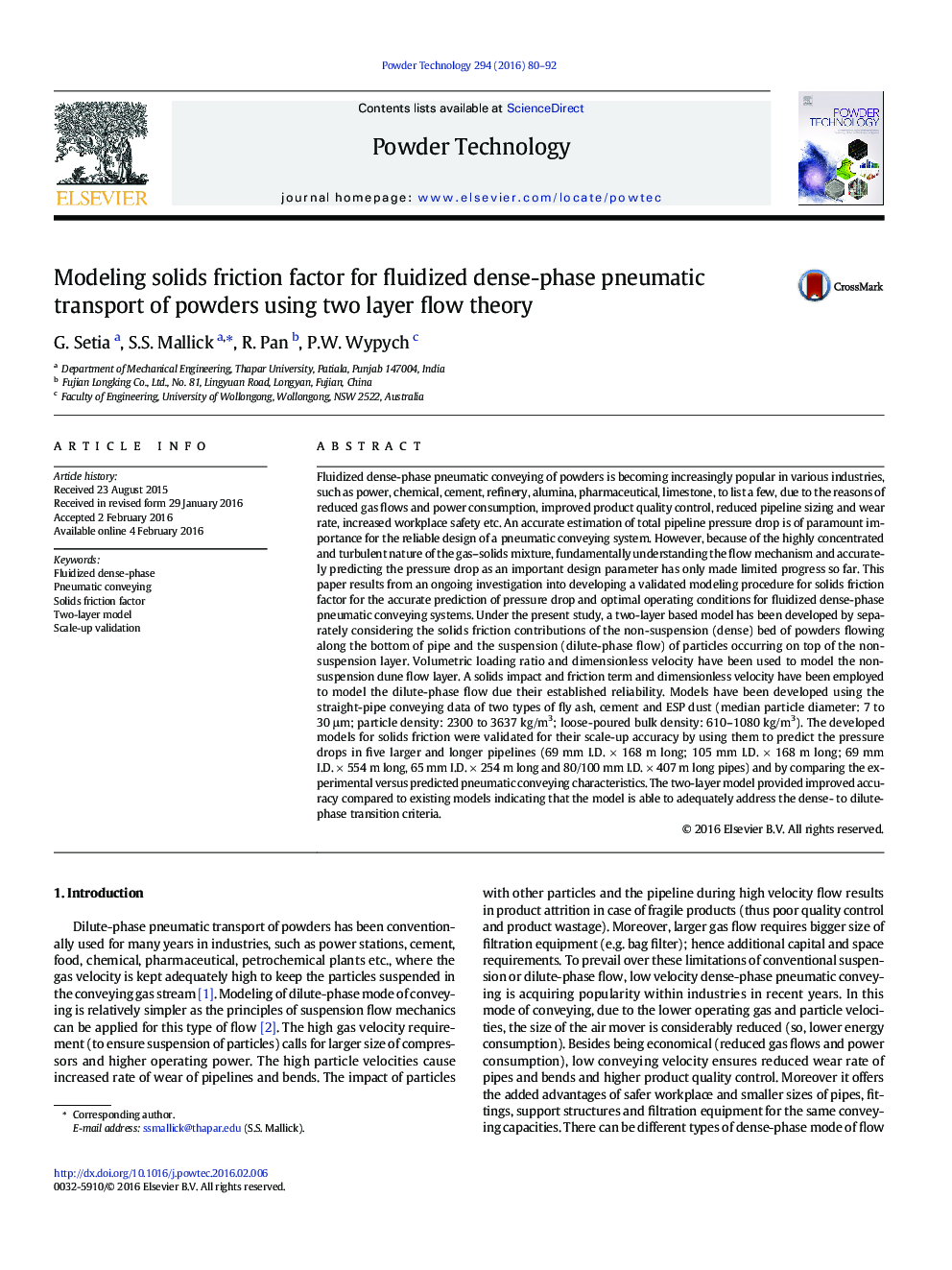| کد مقاله | کد نشریه | سال انتشار | مقاله انگلیسی | نسخه تمام متن |
|---|---|---|---|---|
| 235049 | 465627 | 2016 | 13 صفحه PDF | دانلود رایگان |
• Fly ash, cement and ESP dust were conveyed from fluidized dense- to dilute-phase.
• New models for solids friction factor have been developed.
• New model considers flow of non-suspension and suspension layers separately.
• The new two-layer model has been evaluated for 4 products and 5 pipelines.
• New model has provided better accuracy and trends in PCC than the existing model.
Fluidized dense-phase pneumatic conveying of powders is becoming increasingly popular in various industries, such as power, chemical, cement, refinery, alumina, pharmaceutical, limestone, to list a few, due to the reasons of reduced gas flows and power consumption, improved product quality control, reduced pipeline sizing and wear rate, increased workplace safety etc. An accurate estimation of total pipeline pressure drop is of paramount importance for the reliable design of a pneumatic conveying system. However, because of the highly concentrated and turbulent nature of the gas–solids mixture, fundamentally understanding the flow mechanism and accurately predicting the pressure drop as an important design parameter has only made limited progress so far. This paper results from an ongoing investigation into developing a validated modeling procedure for solids friction factor for the accurate prediction of pressure drop and optimal operating conditions for fluidized dense-phase pneumatic conveying systems. Under the present study, a two-layer based model has been developed by separately considering the solids friction contributions of the non-suspension (dense) bed of powders flowing along the bottom of pipe and the suspension (dilute-phase flow) of particles occurring on top of the non-suspension layer. Volumetric loading ratio and dimensionless velocity have been used to model the non-suspension dune flow layer. A solids impact and friction term and dimensionless velocity have been employed to model the dilute-phase flow due their established reliability. Models have been developed using the straight-pipe conveying data of two types of fly ash, cement and ESP dust (median particle diameter: 7 to 30 μm; particle density: 2300 to 3637 kg/m3; loose-poured bulk density: 610–1080 kg/m3). The developed models for solids friction were validated for their scale-up accuracy by using them to predict the pressure drops in five larger and longer pipelines (69 mm I.D. × 168 m long; 105 mm I.D. × 168 m long; 69 mm I.D. × 554 m long, 65 mm I.D. × 254 m long and 80/100 mm I.D. × 407 m long pipes) and by comparing the experimental versus predicted pneumatic conveying characteristics. The two-layer model provided improved accuracy compared to existing models indicating that the model is able to adequately address the dense- to dilute-phase transition criteria.
Experimental versus predicted PCC using Model 1 and Model 5 for ESP dust through 105 mm I.D. × 168 m long pipe.Figure optionsDownload as PowerPoint slide
Journal: Powder Technology - Volume 294, June 2016, Pages 80–92
